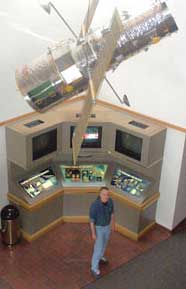Hectic Weekends With The Absent Minded Photographer
[A longish post about developing film and the wages of procrastination…]
I have a little staging area in my basement bathroom/darkroom, where I sit the odd roll of exposed film to be developed at a later date. If it’s something immediate, I do it then and there. But if the roll gets put into the staging area who knows when I’ll develop it. I’ll get to it later, I tell myself. Later being anywhere from tomorrow to the heat death of the universe.
Point of fact, as of Saturday morning I had about twenty-five rolls of exposed 35mm black and white film from various periods in the past decade that I hadn’t yet processed. Some of it was stored in the fridge, and some in the darkroom staging area, and none of it was labeled. This became important when I decided this weekend that I absolutely positively had to develop the last roll of black and white I took at the class reunion. Over a year ago. Okay…now which one was that…??
I’d turned in the digital images from the reunion, and tons of shots I’d taken back in high school, long ago. But that last solitary roll of Tri-X I’d exposed mostly just for old times sake, just to see myself snapping some Tri-X with my classmates as I had once upon a time back when we were all kids, just hung out there waiting. And waiting. This weekend, I was determined to get to it. I reckoned I’d just develop what I had in the staging area until I got to the roll I was looking for. Ha. Setting up to develop film isn’t as simple as copying your digital image files from the flash card to the computer. It’s a tad messy and you have to be careful. This is probably why I’m getting so lackadaisical with my roll film backlog. The digital camera is spoiling me.
I needed to make fresh chemicals and for that I needed to go to the store and buy distilled water. A gallon for Kodak Rapid Fix, Indicator Stop Bath, Perma-Wash and Photo-Flo, then enough to make a half-gallon of HC-110 stock solution. From the stock solution I make a working solution of one ounce stock to fifteen water. I have a Kindermann stainless steel tank that can hold two reels of 120 roll film and four 35mm. The tank needs a quart (32 ounces) to cover four reels of 35mm, so that’s two ounces of HC-110 stock solution to 30 ounces of water to make 32 ounces of developer. That’s a one-shot solution…that is, you use it once and toss it. The advantage to a one-shot solution is you always start with your developer at a consistent strength. But I was going to need 30 ounces of distilled water for every batch of film I ran through the tank. So I went to the grocery store and bought six gallons of distilled water. I swear one of these days someone is going to look at me going through the checkout line with all those bottles of distilled water and think I’m running a meth lab or something and call the cops.
So I get my plastic jugs of distilled water home and start cooking up a batch of fresh chemicals. I have a large assortment of measuring flasks, and a bucket I’ve marked off with half-gallon and gallon tick marks (my European readers are just going to have to endure my constant references here to U.S. measurements…sorry.). I pour the old chemicals out of their storage bottles and rinse them thoroughly. One thing this process isn’t is very green. I use tons of water and all sorts of chemicals are going right down the drain. Whether the chemicals needed to create the circuit boards and memory sticks of the digital realm are any greener when all is said and done is something I wonder about. But from a household point of view, film is a messy business.
I have the basement bathroom light sealed. All I need a darkroom for these days is loading film into the tank. That needs absolute darkness. I have a routine. I set down my film cassettes and lay out all my tools…the stainless steel film reels and developing tank, its lid, a pair of scissors and a tool for popping open 35mm film cassettes. I need these things to be where my hands expect them to be, because once the lights are out the darkroom is, must be, so dark you can’t see your hand in front of your face. You have to know the room by touch. You have to do everything by touch.
A 35mm film cassette is a metal case with a length of film inside, wound around a plastic spool. When I have the lights out, I feel for one, get my fingers around it, and then find the opening tool and pop the case open. Then I ease out the roll of film inside. There better be not even the faintest breath of light in here now or else the film has just been ruined. I carefully put the opener tool back Exactly where it was, then get my fingers around the scissors. The start of a roll of film is shaped into a little tab that goes into the camera’s take-up spool. I have to cut that off to make the end square. When that’s done and the scissors put back, I feel around for one of the stainless steel reels and carefully try to get film started on it.
The reel holds the film in the tank and allows the processing chemistry to circulate around it. Some folks use a loader device but I use my fingers. In the darkroom it’s all about touch. So long as your hands are clean you can safely touch the back of the film and the edges and you’re fine. Just never touch the emulsion side. You need to feel around the edges of the reel to know which way it’s oriented so you don’t try to load the film on backwards. Then thread the film into the center of the reel and start working it around the track. Once you get it started correctly it’s not hard to wind film onto a reel. If it jumps the track you can feel it start to kink and you just backup until it’s going on right again and continue. You must do all this by touch. The saving grace of it is that the natural film curl helps you out in this. It just wants to slide nicely into the reel. If it’s fighting you then you know it’s jumped the track somewhere and you need to backup and do it over. When I reach the end of the film I need the scissors again to cut it off the spool. I let the pieces…the metal case and the spool, just fall onto the floor in the darkness.
When I’ve wound a roll of film into a reel it goes into the tank. Rinse, repeat… I do this four times for four rolls of film and I’m done. I put the lid tightly down on the tank and now I can turn the lights back on. My floor is littered with film cassette cases, spools and film tabs, which I clean up then and there. It’s Real Easy throughout this process to let everything turn into a big mess and you can’t let that happen or you’ll get sloppy and make a mistake and ruin your film. You have to concentrate. I am not a naturally tidy person, but I will keep my work areas clean and well organized because that helps me keep my focus on what I’m doing.
I take my film tank around to the art room The rest of this can happen in normal light. Thanks to the scanner and the computer I don’t need a paper darkroom anymore. Processing film is nothing compared to the work and mess of making paper enlargements. Nowadays I can make bigger prints of far, far better quality with Bagheera, my art room Macintosh, and my nice Epson wide bed printer, then I ever could with my old enlarger setup. And it’s a lot less of a mess. But processing black and white film is mess enough.
The art room is the finished front half of my basement, which the previous homeowner made into a clubroom. It’s got the usual knotty pine walls and thick carpet. He’d put a bar in the back of it. I set up there. On the bar I lay down a work rag because no matter how careful I am there is always some spillage. I put out three one quart measuring flasks. Into one I carefully measure and pour two ounces of HC-110 into 30 ounces of distilled water. Then I pour a quart of stop bath and fixer into each of the others. I have a precision Weston dial thermometer I dip into the flask of developer. It responds quickly and I get a fix on the solution temperature. From that I calculate my development time using the Kodak charts. I am using a non-standard dilution of HC-110…the photo hacker children call it "dilution ‘H’". But it’s simply a double of the standard times for dilution ‘B’. I also take the temperature of the other two solutions. This is important. If they’re not close enough to the temperature of the developer I have to take steps to equalize them. Tri-X is a fast, but grainy film. If you keep everything the same temperature during the process the grain you end up with will be nice and uniform and not bother the eye really. But if the temperature of your solutions diverge very much the grain will tend to clump together and it will look horrible.
When I have all my chemistry ready I hang an old fashion stop watch around my neck and click on and pour developer into the tank and I’m off. For the next fifteen minutes I can’t be disturbed or distracted by anything. While you have solution in the tank you have to watch the clock and agitate every so often. That’s because the solution against the more highly exposed parts of the film gets exhausted quicker then what’s against the less exposed parts, and so development slows down there sooner then elsewhere. Agitation brings fresh chemical up against the parts of the film that are exhausting it quicker. If you don’t agitate those areas of the film don’t get as well developed and overall contrast suffers. But on the other hand if you agitate too much the effect is to over develop parts of the film. This effect is something a film photographer knows how to manipulate depending on shooting conditions. This, and adjusting the development time, is how we used to finesse contrast in the negative before Photoshop.
So I’m sloshing chemicals in and out of the tank. 11 minutes development time at 65 degrees f. 10 minutes at 68, which is the more ideal temperature. My basement nicely oscillates between the two in the winter months. In the summer I have to let my chemicals cool down in a bath of cold water before I can begin. Pour out the developer and then pour in, and right back out, the stop bath. This is just a very weak acid solution. The developer is a base (remember your chemistry class?) and when the stop bath hits what’s left of the developer sticking to the film it kills it. It’s like an instant off switch for the developer stage. Then in comes the fixer. Fixer is acidic too, and so some photographers don’t bother with a stop bath for film. I do it on the ground that at least it protects the fixer from becoming exhausted too quickly. But it isn’t critical. The developer changes the silver salts in the film that were hit by light to metallic silver. The fixer dissolves the silver salts that were not developed, leaving the negative image on the film. 4 minutes to fix.
Then I have to wash it. I take the tank over to the sink, take the film reels out of the tank and drop them into a film washer that holds the same size and number of film reels as the tank. It connects to the sink faucet and two holes at the base draw in air and create a vortex that swirls around the film, getting the last of the fixer off it. That’s very important. If any fixer is left behind on the film it will begin to slowly stain it and then your negatives are ruined. Again, I have to monitor the temperature of the wash carefully. It needs to be the same as the chemicals I used for developing.
Now I can relax a bit. The critical part is done. I will usually take a quick glance at the film now, to reassure myself that everything is okay. I can let my mind wander a bit…maybe go grab a snack from the kitchen. But I still keep the stopwatch around my neck. After about fifteen minutes of washing I pour a solution of Perma-Wash into the tank and dip the film in it for a minute. This is supposed to neutralize the last of the fixer. Then wash for a few minutes more, then I pour a solution of Photo-Flo into the tank and bathe the film in that for a minute. Photo-Flo is a simple wetting agent that prevents spotting on the film as it dries.
Slosh, slosh, slosh. By now I have little spills everywhere. I’m not exceptionally clumsy, but you have to get these solutions in and out of the tank pretty quickly and I won’t fret if a little spills now and then. Your kitchen isn’t going to remain spotless while you’re busy cooking in it either.
Then I take the film back to the bathroom and hang it up to dry. It must dry in as dust-free an environment as I can manage. At this stage the film emulsion is soft, and if dust gets on it now as it is drying and hardening it’s there forever.
Once the film is up on hangers to dry, I begin cleaning my workspace. Even if I am going to do another batch right away, I clean everything up. Especially then. The used developer goes down the sink. The stop bath and fixer back into their storage jugs. The tank and reels and empty measuring flasks into a wash bin I carry upstairs to the kitchen sink. I mop up every spill until the workspace is clean and dry again. I rinse out the tank and reels and flasks and set them out to dry, or hand dry them if I need to use them again right now.
Take a breath. Pause. Think about what you are doing…go over your mental checklists… Wash…rinse…repeat…
I did this all weekend long, looking for that damn roll of film from the reunion. And I didn’t find it. Twenty-five rolls I processed, and none of them were the one I was looking for.
There was one roll left in the staging area…a roll I wasn’t sure was Tri-X. It was in a Fuji color film cassette, but I’d often re-used those for bulk reloading back in the day. I usually make sure to put a piece of tape over it to identify it as Tri-X though. This one didn’t have that, but it was one of the older Fuji cassettes I usually used for that. So I turned off the darkroom lights, popped the case, cut off the tab, put the film back in the case, turned the lights back on and looked at it. Even before I’d turned the lights back on though, I knew it was one of my bulk reloads because of how I’d shaped the tab.
I had a batch of film from the big tank in the wash. I had some smaller tanks though that held only one and two reels, and a spare reel. So I ran that roll through the process while the others were washing. That wasn’t the roll I was looking for either.
I was beginning to get desperate. I dug around and uncovered three more unprocessed rolls of Tri-X in a part of the fridge I’d reserved for color. They’d gotten mixed in, but this was old stuff and I doubted the film I was looking for was one of those. I dug through my camera bags looking for anything I might have missed. I found a partially exposed roll still in one camera body that I though might…just might…be the roll from the reunion. My habit is to use one body for color and one for black and white, and at the reunion I had both of those plus the digital camera. Maybe I just hadn’t taken out the roll of film from the black and white body.
But I was done for the weekend. I’d used up all the distilled water I’d bought and before I could process any more I’d need to buy some. After a thorough search of Casa del Garrett I’d come up with four possible rolls of film and a fifth that had still been in the camera. Figured I’d do them Monday. I was already thinking out my apology to the reunion committee for loosing the film. It wouldn’t have been a big loss…I’d given them a ton of stuff already. But that one last little roll might have had some good shots on it too, and it seemed now that it was gone.
So this morning I get up and start cutting all the film I’d developed down from the hangers. I cut a roll to lengths of six shots each, and store the strips temporarily in glassine envelopes until I get them scanned. During scanning the roll gets assigned a number based on a system I’ve used since high school, and then it goes into an archival film holder page with that number written on it, plus a few notes about what’s on it, and the page goes into a binder for safekeeping. As I’m cutting I’m looking at what’s there. It’s an odd assortment of images from almost a decade’s worth of odds and ends…film I hadn’t gotten around to developing because it wasn’t pressing. An office Party. Images of Kansas and Monument Valley. Shots from around my Baltimore neighborhood. Oh…what’s this…??
I’d worked my way back to the beginning of my weekend’s work and there, in the middle of one of the rolls, were the shots from the reunion. I hadn’t taken a whole roll of black and white that evening, which was probably why I’d not developed it the next day. I’d likely wanted to finish the roll first, then in the process of getting the color film developed and working on the digital images plus all the stuff from my high school years, I’d let it slip. I’d developed the roll I was looking for in the very first batch I’d done and I’d missed it completely. The reunion shots were right there, in between a trip to Stroudsburg to visit my friend Glenn, ironically another high school classmate I hadn’t seen in almost two decades, and Peterson’s performance at Gallaudet a month after.
There’s a lesson in here somewhere but I am unlikely to learn it. Considering the volume of film I still shoot, even with the digital cameras in my stable, I actually don’t stage all that much. It’s mostly odds and ends that I put aside for later processing. There were another two full rolls from Peterson’s Gallaudet performance that I’d developed right away, and one from that first visit in years to see Glenn. The reunion shots were in the middle of both of those and I had tons of other stuff from that event that I’d taken care of. It fell between the cracks.
I do this all the time…staging odds and ends for development that I never get around to for years, and then suddenly I do it all at once. And what I discover every time is how facinating the odds and ends are when you look at them after years have gone by. It’s like re-living random bits and pieces of your past all at once. But I need at least, to make it a rule from now on, that no film goes into the staging area without a tag on it that tells me what it is.







































